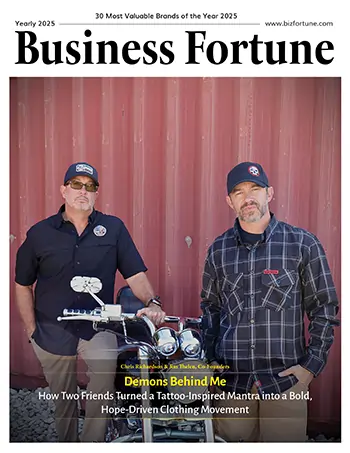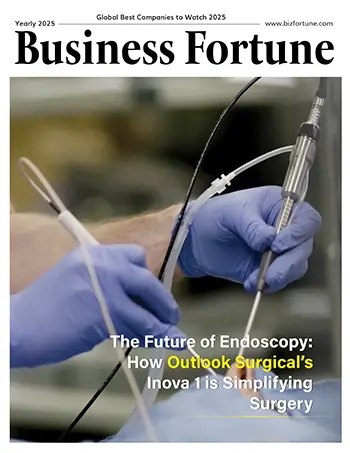Home Industry Space Center for Near Earth Object S...
Center for Near Earth Object Studies Reports an Asteroid Hit
Space

Business Fortune
12 Febuary, 2025
The "Center for Near Earth Object Studies" (CNEOS) operates under NASA to conduct research on asteroids together with other Earth-threatening objects. A pressing announcement from the "Center for Near Earth Object Studies" alerted public awareness about an asteroid speeding toward the Earth. The situation has worsened because the asteroid presents an expanding threat of hitting our planet directly. Planetary defense strategies along with the "Torino Impact Hazard Scale" and space agency programs have become essential for disaster prevention because the outcomes are too significant to risk.
Newly detected asteroids with advancing asteroid detection systems bring humanity closer to prevent impending dangers. Proper planning gives humanity a fighting shield to protect our planet despite the low probability of catastrophic asteroid collisions although the number of detected signals continues to increase.
What is the Center for Near Earth Object Studies?
The NASA program called Center for Near Earth Object Studies actively investigates near-Earth objects (NEOs). The Center for Near Earth Object Studies executes vital duties by uncovering near-Earth objects before monitoring and analyzing them through their proximity to Earth's orbital path. This program has the mission to warn everyone and required emergency responders about existence of threats from flying space objects.
The Torino Impact Hazard Scale development and support function stands as one of the principal missions of the Center for Near Earth Object Studies. The Torino Impact Hazard Scale consists of quantity levels starting at zero for no hazard and ending at ten for an imminent global disaster which assists in defining threat severity. Authorities assigned a risk assessment as high to a newly discovered asteroid.
The Torino Impact Hazard Scale and Its Role in Monitoring Asteroids
The Torino Impact Hazard Scale provides essential support to planetary defense through asteroid impact classification. A near-Earth object will receive a Torino number after scientists determine its potential to hit Earth. Scarier Torino numbers suggest a greater risk of asteroid collisions starting from minimal danger level 0 up to life-threatening level 10.
The Center for Near Earth Object Studies issued its newest warning about a newly discovered asteroid which caused the Torino scale to increase because scientists now see more potential for an impact. This rating system enables international cooperation and helps ensure planetary defense corporations can execute their tasks successfully. The discovery of a threatening asteroid leads to rapid asteroid assessment to find possible mitigation solutions for minimizing its destructive potential.
What is Planetary Defense?
Planetary defense describes the systems and approaches which Earth uses to protect itself from potential threats created by comets and asteroids. NASA together with the European Space Agency (ESA) and other space agencies works proactively on planetary defense through investments into research and development of early warning systems and asteroid-diverting experiments to protect the Earth from dangerous space debris.
The Center for Near Earth Object Studies established itself as the leader behind developing planetary defense methods. Modern technology through the DART mission enabled CNEOS to prove asteroid deflection works as a planetary defense system. The Center for Near Earth Object Studies works to develop asteroid hazard preparedness for all humankind. The defensive strategy proves essential since minimal asteroid collision probability rise could result in catastrophic effects. The DART mission established a functional defense strategy which protects planets from space threats. The DART mission demonstrated how NASA-funded skywatchers with modern technology safeguard against space catastrophes by controlling celestial bodies.
How Often Do Planets Align?
The correct prediction of asteroid movements becomes essential during assessments of planetary alignment scenarios. Solar system planet alignments take place frequently but they do not change the trajectories of asteroids. Scientists along with space enthusiasts feel drawn to the question on how often do the planets align.
The space alignment of planets appears approximately every few years through their formation of a linear arrangement. Although planetary alignments create excitement they do not present significant dangers to our planet. Even so the requirement for planetary defense continues because some people maintain that asteroid gravitational pull would change during direct alignments yet there is no evidence to back their assumption.
What Happens When All the Planets Align?
There exists a rare and extraordinary phenomenon during planetary alignment. People frequently link planetary alignments to apocalyptic prophecies, because people are unaware of what happens when all planets align, but such events prove much less catastrophic in reality. The gravitational powers propelled by planets cannot trigger significant safety changes on Earth.
These rare occurrences draw public attention but officials must maintain their attention toward real asteroid dangers. Asteroid monitoring at the Center for Near Earth Object Studies assumes great importance since it separates astronomical planetary events from real asteroid hazards. The study of newly detected asteroids proves more crucial in planetary defense than the occurrence of planet alignments which creates public fascination.
The History of the European Space Agency and Its Role in Planetary Defense
The European Space Agency functions as a leading organization that explores space while defending planets from space threats. People in the scientific world often discuss the comparison between NASA and the European Space Agency. Although their goals overlap regarding space research and space debris management ESA takes a different approach to these objectives than NASA.
ESA maintains close theoretical and material support with NASA regarding planetary defense efforts to stop asteroid collisions. The shared effort of planetary defense between space agencies creates a worldwide focus which enables both agencies to investigate risk reduction methods through new asteroid monitoring and defense technologies. Throughout its existence The European Space Agency continues its traditions of mutual partnerships along with extensive research and technological advancement.
The Tunguska Event and the Lessons Learned
The asteroid Tunguska incident of 1908 serves as an illustration of an asteroid's destructive impact. The incident that destroyed Siberian forests took place in the region where an asteroid or comet initiated an atmospheric blast. The explosion which occurred from the asteroid destroyed more than 2,000 square kilometers of woodland even though the asteroid failed to touch down. The asteroid impact tragedy encouraged scientists to focus on planetary defense research as well as asteroid avoidance techniques.
The asteroid Tunguska incident teaches us the value of near-Earth object tracking along with asteroid strike investigation. Modern space organizations led by the ESA together with the Center for Near Earth Object Studies now employ asteroid detection systems to track space objects which prevent unanticipated Earth impacts.
The Asteroid 99942 Apophis: A Potential Threat?
Asteroid 99942 Apophis stands recognized as one of the most renowned space rocks from the modern era. Scientists first identified asteroid 99942 Apophis in 2004 when this space rock posed a serious threat because of its proximity to Earth combined with potential collision risks. Further investigations reveal that the asteroid poses only a minimal impact risk for the moment.
The prospective asteroid impact evaluation process is demonstrated by Apophis which shows the value of Center for Near Earth Object Studies and planetary defense missions. The knowledge gained through studying Apophis enables researchers to create better methods for asteroid spotting and path tracking as well as redirection systems for protecting Earth.
NASA-Funded Skywatchers: The Key to Asteroid Detection
NASA-funded skywatchers are critical components of the planetary security architecture. These observatories and researchers study asteroids, analyze their travels, and identify possible threats to Earth. These NASA-funded skywatchers collaborate with worldwide groups and employ powerful telescopes to spot any newly detected asteroid that may pose a hazard.
Their efforts have resulted in the discovery of several near-Earth objects, some of which are large enough to do major damage if they hit Earth. NASA-funded skywatchers contribute significantly to planetary security by monitoring these objects and developing tools to modify their courses.
Conclusion
The new notice from the Center for Near Earth Object Studies emphasizes the rising need of planetary defense in protecting Earth from future asteroid strikes. Through collaboration with institutions such as the European Space Agency, the establishment of the Torino Impact Hazard Scale, and the work of NASA-funded skywatchers, mankind is taking proactive actions to limit the threats presented by near-Earth objects. While the likelihood of a direct collision with a huge asteroid remains low, continuing study and surveillance will guarantee that we are ready for any potential risks in the future.


































